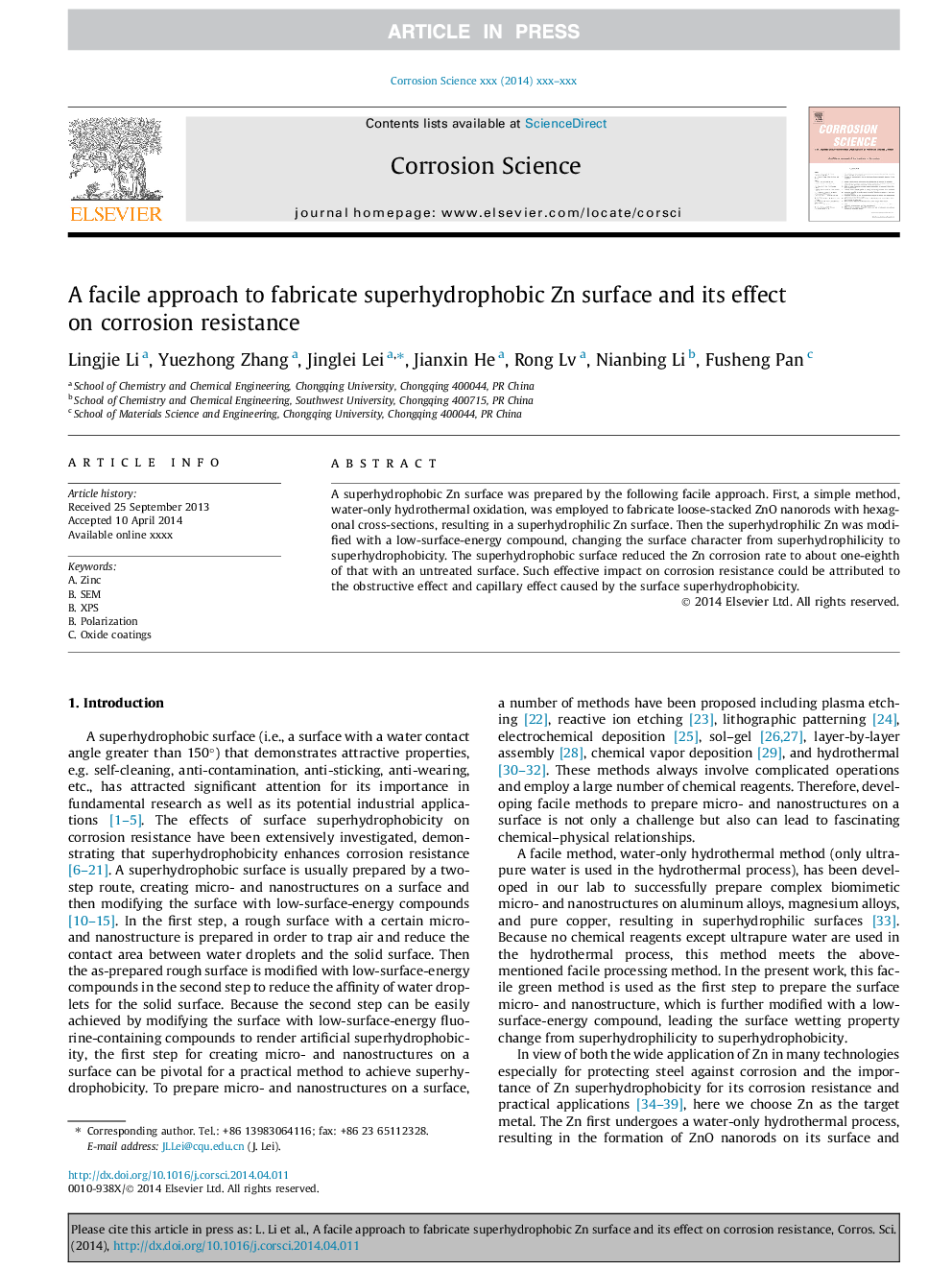| Article ID | Journal | Published Year | Pages | File Type |
|---|---|---|---|---|
| 7895789 | Corrosion Science | 2014 | 9 Pages |
Abstract
A superhydrophobic Zn surface was prepared by the following facile approach. First, a simple method, water-only hydrothermal oxidation, was employed to fabricate loose-stacked ZnO nanorods with hexagonal cross-sections, resulting in a superhydrophilic Zn surface. Then the superhydrophilic Zn was modified with a low-surface-energy compound, changing the surface character from superhydrophilicity to superhydrophobicity. The superhydrophobic surface reduced the Zn corrosion rate to about one-eighth of that with an untreated surface. Such effective impact on corrosion resistance could be attributed to the obstructive effect and capillary effect caused by the surface superhydrophobicity.
Related Topics
Physical Sciences and Engineering
Materials Science
Ceramics and Composites
Authors
Lingjie Li, Yuezhong Zhang, Jinglei Lei, Jianxin He, Rong Lv, Nianbing Li, Fusheng Pan,
